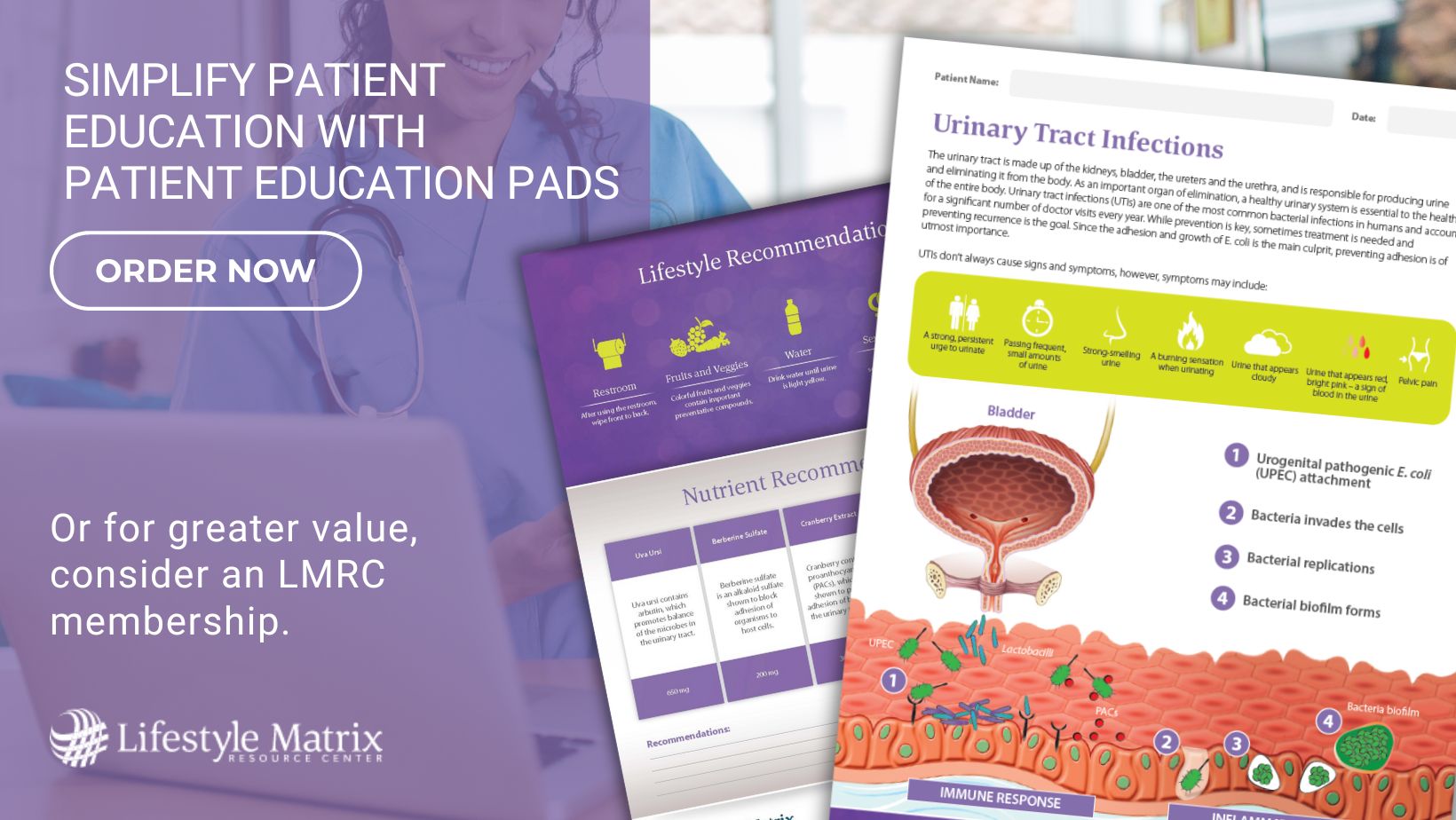Many clinicians in functional, integrative and lifestyle medicine experience similar challenges, such as poor patient compliance with treatment protocols, especially those requiring lifestyle changes, or difficulty retaining patients long enough to complete recommended care plans. Clinicians may also find themselves without enough time to dedicate to both patients and practice development.
A strategic focus on increasing patient engagement can address these common pain points. This blog post offers several easy-to-implement strategies that can bolster patient engagement in your practice.
Who Are Engaged Patients?
Engaged patients are active participants in their own health care. These individuals want to collaborate
with your team to establish personalized care plans.
Engaged patients are also committed to executing the care plans and lifestyle changes you recommend. They have an empowered mindset that drives them to take command of their well-being by learning about their conditions, and they persevere through challenges met while carrying out their treatment plans. Engaged patients are willing to make changes to their lifestyle habits to help restore their health.
And finally, they view their health care practitioners as teachers and guides who can provide the information needed to own and navigate their wellness journey. These patients understand they need to invest time, effort and potentially money into restoring their health. They are empowered with the mindset that they are responsible for their own health.
What Are the Benefits of Patient Engagement?
Patients who are motivated to take ownership over their health care journeys are more likely to have positive outcomes.
Having more patients with better health outcomes and positive experiences with your practice can also help you build a strong reputation within your local community. The long-term benefits of this positive reputation will help your business be sustainable over time. Positive word-of-mouth and online reviews go a long way in terms of feeding a new patient pipeline.
Patient Engagement Strategies You Can Start Using Today
Boosting patient engagement in your practice can be as simple as routinely incorporating patient education handouts, practicing active listening, and setting a collaborative tone when determining goals and treatment plans with patients.
Practices with extremely high patient satisfaction, participation and rates of positive health outcomes incorporate many different strategies and tools to establish a culture that prioritizes collaboration and patient-centered care.
Here are a few practices you can easily implement to encourage higher patient engagement, specifically focusing on patient education strategies.
1. Routinely Implement Patient Education Handouts
Most people are visual learners. Using visual teaching aids
can help patients understand and retain the information you share during appointments. When patients take home or can have digital access to any learning resources reviewed during their medical appointments, they will be more likely to remember and
incorporate any lifestyle changes or protocols accurately.
Consider these questions about patient education materials in your practice:
- What are the five most common health complaints you treat?
- Do you have handouts on those topics in your exam room that you can use as conversation guides?
- How often do you repeat the same or similar education to patients individually?
- Premade patient education handouts will save you time and headspace because you won’t need to reinvent the information you teach for each patient. It’s also helpful to have comprehensive resources on hand to ensure you cover all the necessary bases with patients.
With a library of resources to pull from, you will naturally establish a standardized flow for educating your patients. For example, if you commit to giving all your patients with digestive complaints the same foundational gastrointestinal health
handout, you can assume going forward that your GI patients will have the same level of foundational education.
The next step after this is to establish a flow for providing continuous patient education throughout their care journey so they stay engaged and continue learning more about and improving their health. You can also bring your staff into this process so they can answer some basic questions from patients.
2. Host Free Webinars or Build a Video Channel
Consider hosting webinars or posting videos that provide free medical education. This will help you establish yourself as a health authority in your community, familiarize prospective patients with your approach to care, and provide an opportunity to showcase your expertise and clinical services. You can also position yourself as a clinician who prioritizes lifestyle-first medicine, which is now in high demand.
Webinars and videos are great ways to attract new patients or re-engage with those who haven’t committed to your practice yet. Participants can conveniently preview your approach to medicine at no cost.
You can also use your webinar as a lead magnet, which is a method of collecting the contact information of people in your online or local communities who are interested in what you offer.
Raising awareness about your practice and your approach to medicine is a great strategy you can use to support your business in the digital age. Check out this blog post for more information on why you may want to host webinars.
3. Incorporate Group Medical Visits
Group medical visits include an educational presentation in a group setting, while a practitioner also sees each attendee for a check-up. With proper documentation, the group visit can typically be billed to insurance. Even if your practice is cash-only, group visits will allow you to charge individual patients less than a traditional office appointment. This means that more people will be able to access your care if cost is a barrier to entry.
Organizing and hosting group visits will also allow you to offer patients a sense of community and support by connecting them with other patients who are working through similar health issues.
Plus, you will be able to offer a more thorough educational experience since group visits typically allow for a 45-75 minute presentation and a Q&A. In a traditional patient visit, you may only have a few minutes per patient to offer education.
You can learn more about group visits by watching the video on this page or by downloading our Group Visit Toolkit white paper.
4. Foster a Culture that Supports an Intentional Patient Journey
Once you've mastered individual strategies to improve patient education, you can graduate to developing a more strategic patient experience that leaves your patients with a strong positive impression of your practice.
Practicing active listening when working with patients sets a tone of collaboration and shows you are compassionate, empathetic and receptive. This, in turn, will make patients more likely to be open to your recommendations.
When patients communicate with your staff, the experience should be consistent and seamless while demonstrating your practice values. Patients should feel comfortable asking questions, and you or your staff should be available and prepared to provide assistance. Finally, patients need to feel comfortable in your physical office space and feel it is a healing environment.
How to Transform Your Practice by Boosting Patient Engagement
You can build a practice culture where communication, collaboration and engagement are commonplace by using several of the previous approaches in combination with persistent effort and guidance from LMRC Practice Consultants.
LMRC offers patient education tools, functional medicine clinical training for you and your staff, sample treatment protocols, and more.
Interested in exploring your practice needs further? Then please take our two-minute practice assessment.
If you’re ready to take the next step, join a free info session with our Practice Consultants who can walk you through what our membership offers, including:
- A suite of patient education resources on dozens of the most relevant functional medicine health topics.
- Social media templates and premade presentation toolkits so you can promote and host your own webinar.
- Group Visit Toolkits created in partnership with Shilpa P. Saxena, MD.
- The Wellness Score®, a health scorecard that shows patients how your protocols are improving their cardiometabolic biomarkers.
- Member-exclusive webinars on business and clinical topics.
- One-on-one calls with Practice Consultants for guidance on how to use these tools to reach your practice goals.
- And much more!

Lauren Ricciardi is a versatile content writer and curator with experience in membership-based organizations.




